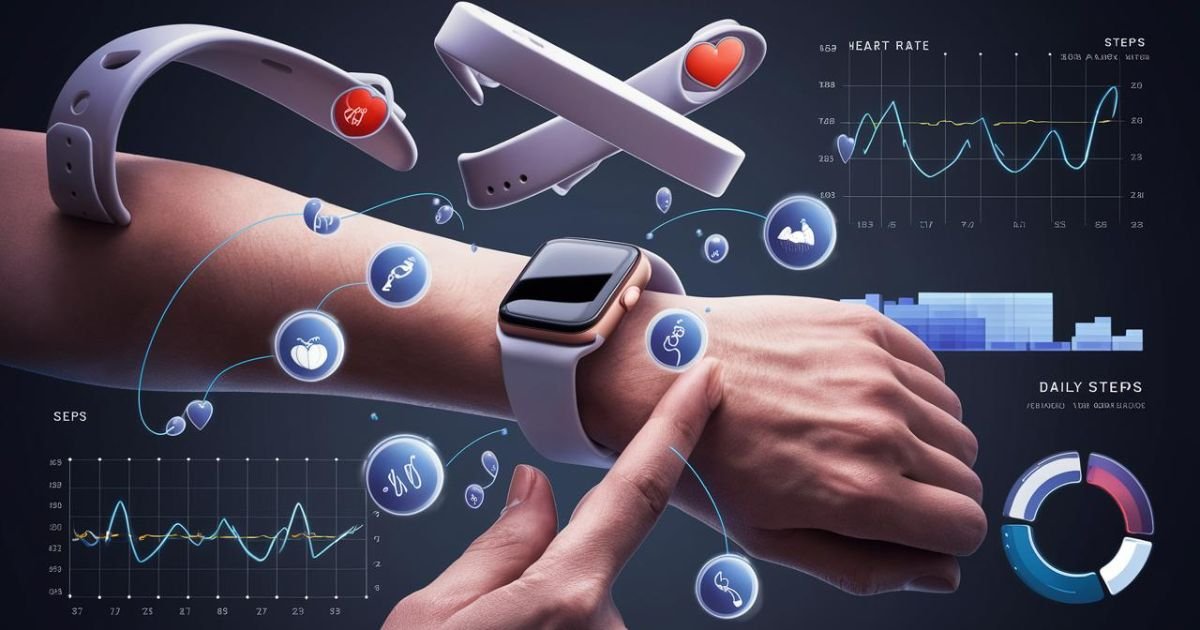In recent years, wearable technology has become an essential part of the health and fitness landscape. From smartwatches to fitness trackers, these innovative devices are revolutionizing how we monitor and manage our well-being. In this article, we will explore how wearable technology is enhancing our health and fitness routines, offering new ways to stay motivated, track progress, and ultimately lead healthier lives.
The rise of wearable technology in health and fitness
Wearable technology has evolved rapidly, driven by technological advancements and a growing interest in personal health. Devices like Fitbit, Apple Watch, and Garmin have become household names, offering features that go beyond simple step counting. Today’s wearable technology can monitor heart rate, track sleep patterns, measure oxygen levels, and even provide insights into mental well-being.
The integration of wearable technology with mobile apps has further expanded its capabilities, allowing users to set goals, receive real-time feedback, and stay connected with their health data. This seamless connectivity between devices and software is one of the key drivers of wearable technology adoption in the health and fitness industry.
The health benefits of wearable technology
- Real-time health monitoring
- One of the most significant advantages of wearable technology is the ability to monitor health metrics in real-time. Devices can track vital signs like heart rate, blood pressure, and oxygen saturation, providing users with instant feedback on their health status. This constant monitoring allows individuals to detect potential health issues early and seek medical advice before they become serious.
- Personalized fitness tracking
- Wearable technology offers personalized fitness tracking, enabling users to monitor their daily activity levels, caloric intake, and exercise routines. These devices can provide customized workout plans based on individual goals, fitness levels, and preferences. Wearable tech can tailor to meet your needs, whether you’re a beginner looking to start a fitness journey or an athlete aiming to optimize performance.
- Improved sleep quality
- Many wearable tech devices come with sleep tracking features that analyze sleep patterns and provide insights into sleep quality. By monitoring sleep stages, heart rate variability, and movement during the night, users can gain a better understanding of their sleep habits and make adjustments to improve restfulness and recovery.
- Insights on mental health
- Beyond physical health, wearable technology is also making strides in mental health management. Devices can monitor stress levels through heart rate variability and provide guided breathing exercises to help users manage anxiety. Some wearables also offer mood tracking, allowing users to log emotions and identify patterns that may affect their mental well-being.

How Wearable Technology Enhances Fitness
- Motivation and Accountability
- Wearable technology is a powerful motivational tool because it provides users with instant feedback on their progress. Whether it’s hitting a step goal, completing a workout, or achieving a new personal best, these devices keep users accountable and motivated to stay on track with their fitness goals.
- Activity Tracking and Goal Setting
- With wearable technology, users can easily track their daily activities, including steps taken, calories burned, and distance covered. These devices allow for goal setting, enabling users to set and achieve specific fitness objectives, such as running a certain number of miles per week or burning a target number of calories each day.
- Enhanced Workout Experience
- Wearable technology can enhance the workout experience by providing real-time data on performance metrics such as pace, speed, and distance. This information allows users to adjust their workouts on the fly, optimizing their efforts for maximum results. Additionally, many wearables offer guided workouts and exercise suggestions based on the user’s fitness level and goals.
- Community and social connectivity
- Many wearable tech platforms include social features that allow users to connect with friends, join challenges, and share their achievements. This sense of community and competition can be a significant motivator, encouraging users to stay active and engaged in their fitness journeys.
The future of wearable technology in health and fitness
The future of wearable technology in health and fitness looks promising, with ongoing technological advancements continuing to enhance these devices’ capabilities. Future innovations may include more accurate sensors, longer battery life, and even more seamless integration with other health services and platforms.
As wearable technology continues to evolve, it will likely play an even more critical role in personalized health management, offering users deeper insights into their well-being and empowering them to make informed decisions about their health and fitness.
Conclusion
Wearable technology is undoubtedly transforming the way we approach health and fitness. With their ability to provide real-time monitoring, personalized insights, and motivational support, these devices are helping people lead healthier, more active lives. Whether you’re just starting your fitness journey or looking to take your training to the next level, wearable technology offers the tools and support you need to achieve your goals.
By integrating wearable technology into your daily routine, you can gain a better understanding of your health, stay motivated, and ultimately reach new heights in your fitness journey. The future of health and fitness is here, and it’s wearable.
